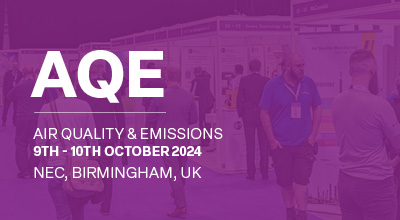| Abstract Title: | A response to several known issues involving Air Quality Sensors for Ambient Monitoring |
| Presenter Name: | Dr Edurne IbarrolaUlzurrun |
| Co-authors/Co-presenters: | Mr Miguel Escribano |
| Company/Organisation: | Kunak Technologies |
| Country: | Spain |
Abstract Information :
According to the WMO, the main issues found in the lowcost sensorsEnvironmental conditions effects lowcost sensors have a nonlinear response to temperature, humidity and pressure. Besides, some gas sensors are susceptible to crosssensitivities from other common atmospheric compounds.Baseline and Sensitivity drift Lowcost sensors suffer from nonlinear baseline and sensitivity drift over time. They will require regular calibration to adjust these parameters. Besides, when deploying air quality monitoring devices or an air quality device network, the correct installation and the correct maintenance must be considered to ensure the proper performance of the devices and the quality of the data.As it is said in Snyder et al., 2013 Data of poor of unknown quality is less useful than no data since it can lead to wrong decisions.There is a need to determine a unified approach for the performance and evaluation of air quality monitoring systems to solve these issues. CENTC 264WG 42 and the USEPA Performance testing protocols, metrics, and target values for O3 and PM2.5 air sensors are examples of a coordinated international effort to address these issues.According to the final draft of the WMO, it is vital that the data processing performed during QAQC is transparent and properly documented.Quality assurance QA, through a process of understanding and applying an appropriate calibration to any device, ensures that data monitored are robust and accurate.Quality control QC is the act of monitoring the longterm performance of an air quality monitoring system during deployment in a sensor network to ensure it remains calibrated and giving reliable data and can help notify the user when it needs to be corrected, removed, or recalibrated.A smart gas cartridges system integrates the lowcost sensor, following a detailed QAampQC procedure, targeting the main environmental pollutants, allows to solve in a practical and easy way all the lifecycle challenges, its operation and maintenance, and the several lowcost sensors challenges.Each cartridge can be characterized and select the bestinclass sensors which can perform well on the field under specified environmental conditions of temperature and humidity. Besides, they can be individually calibrated in the laboratory, against traceable reference standards, and validated on the field, adapting the corrections for every specific sensor if required.The new draft of the WMO talks about the utility of sensor networks continues growing, being important to develop and refine new scalable calibration and quality control approaches. Proper QAampQC procedures allow users to better understand the quantitative capabilities of their air quality monitoring solution and are resourceefficient such that they keep the overall cost of the network operation low. Thus, according to the WMO, developing, optimizing, and refining advanced techniques for sensor calibration and validation is an important area of ongoing research and is essential to obtain reliable and meaningful data from sensorbased air quality devices.According to this, the most needed functionalities in air quality software would be Visualize in an easy way the operation of the equipment and the data obtained, allowing to monitor the health of the network, the status of the equipment and consult logs.Detect errors and anomalies in the devices and data immediately, consult them from the software platform, and invalidate the data if needed.Detect that the gas and particles sensors need calibration and provide a tool to carrying out the calibration remotely. Availability of a validation tool for validate and invalidate the data remotely, to have reliable data for advanced analysis.A Computerbased Maintenance Management System that allows recording of all maintenance tasks, uploading of images and documents, access to configuration history, logbook, etc. to facilitate the network maintenance.Thus, all of these tools allow proper and simple maintenance of the devices and networks to obtain reliable and accurate air quality data effortless.



